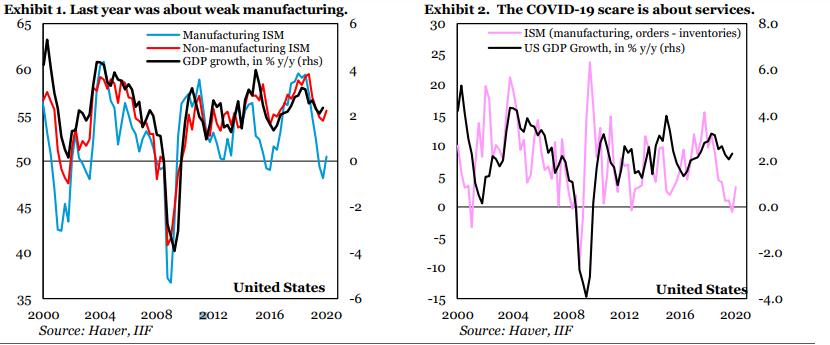Global growth could conceivably approach 1% this year, far below the 2.6% the world achieved last year and the weakest since the global financial crisis, due to the impact of the Covid-19 on the services and manufacturing sectors, the International Institute of Finance (IIF) said in its latest report.
Covid-19 is a large family of viruses with some causing less-severe disease, such as the common cold, or more severe diseases such as MERS and SARS. The virus was confirmed to transmit easily from person to person.
According to the World Health Organization, to date, Covid-19 cases around the world reached 101,927cases, while Covid-19’s death toll recorded 3,486, placing people into a state of terror, causing them to cancel or postpone most of their economic activities.
The IIF revised its forecast for US growth to 1.3 % this year, down from 2% previously, and has also lowered its growth forecast for the Chinese economy to less than 4%, from 5.9% previously.
“Our ‘no recession’ call last year was made with high conviction, because hard data persuaded us that the inventory correction in global manufacturing was near an end. What is now going on with the global scare around Covid-19 is very different,” the IIF explained.
The financial association explained further that the global Coronavirus scare is different and that supply disruptions to manufacturing delivery times in manufacturing Purchasing Managers Index (PMIs) are very high, but the epicentre of potential fallout for the economy is services, where the severity of effects depends on the scale of contagion and resulting containment measures. It finalised that the range of potential outcomes is large and depends on the spread of the virus and resulting economic fall-out, all of which are highly uncertain at this stage.
“The range of possible outcomes is large and uncertainty around any forecast is bigger than when under normal circumstances,” it concluded.
The report pointed out that emerging markets (EM) are experiencing increasing pressure, but Federal emergency cuts provide cover for further easing.
The IFF said that the Fed’s emergency 50 bps cut is an opportunity for central banks in EMs, who had held off so far out of concern their currencies may weaken, to finally cut.
“This is especially important in high carry, low growth places like Mexico and South Africa, but holds more broadly across EMs where growth has been weak in many places. Such a (de facto) coordinated easing cycle would help bring growth to EM and buffer the global economy from Covid-19,” the IIF mentioned.




